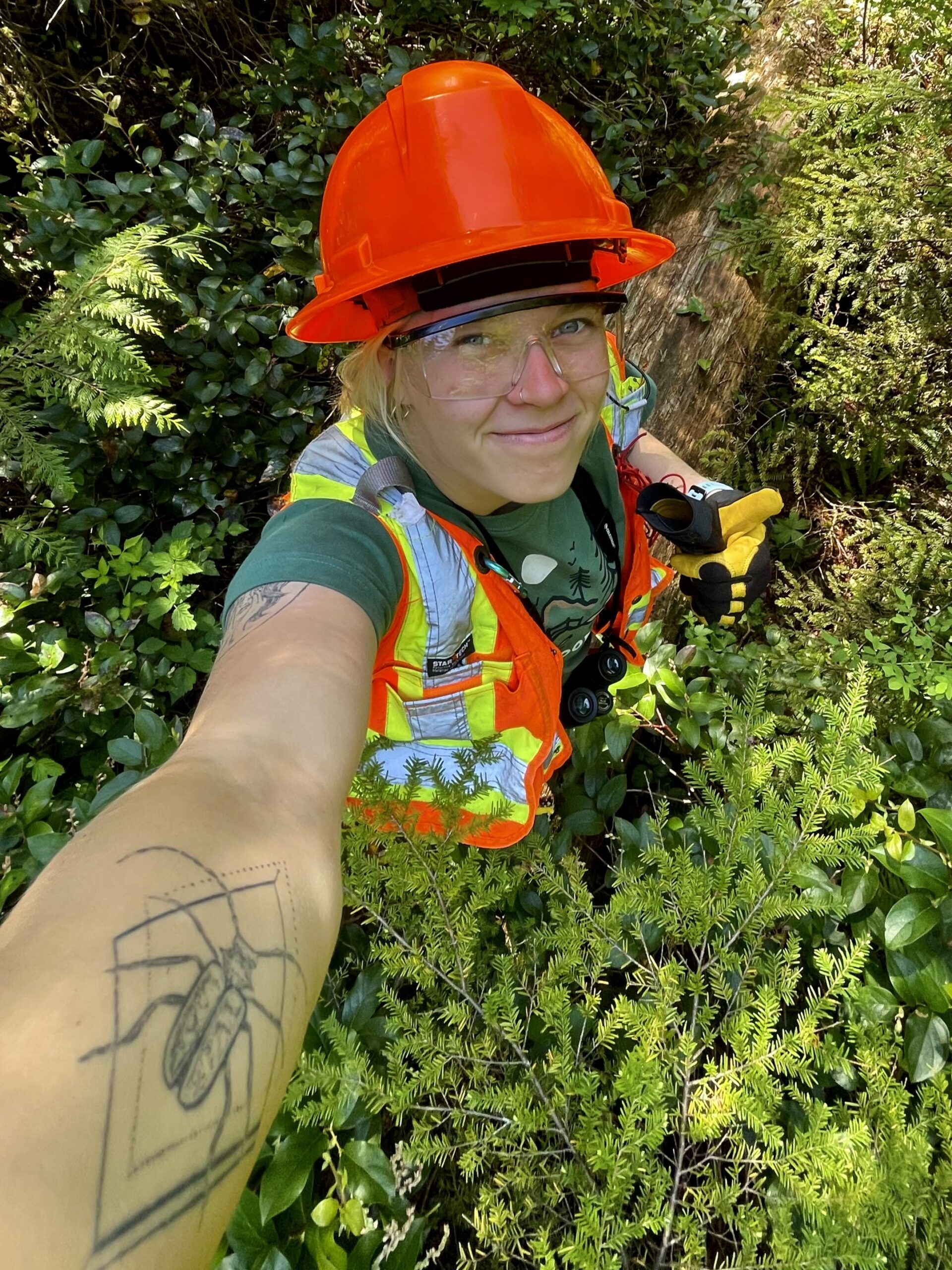Your cart is currently empty!

Taylor Holt
Taylor Holt is a Silviculture Research Technician with the Forest Science, Planning, and Practices Branch of the Ministry of Forests, where she assists in the management of long-term research installations across the province focused on the impacts of fertilization, thinning, mixed-species stand dynamics, and silvicultural systems. Taylor holds a MSc in Forestry from UBC, where she researched the physiology and population structure of the alder bark beetle, and BSc in Biology from UVic, where she studied Sitka spruce resistance to the white pine weevil. She is currently pursuing dual professional designations to become a Registered Professional Forester (RPF) and Registered Professional Biologist (RPBio). In her spare time, you can find her exploring mountains and swimming in lakes with her dog Moose by her side.
Presentation Abstract
In 2024-25 the silviculture research team, in collaboration with the stand establishment team, (Forest Science, Planning, and Practices Branch) started an adaptive silviculture trial to evaluate drought resilience of an alternate stocktype at post-wildfire reforestation sites in the southern interior. This research project (led by Jodi Axelson) is being done in collaboration with silviculture and soils researchers and silviculture experts in the Thompson-Okanagan, and Cariboo Regions, as well as site-level research partners: Cook’s Ferry Indian Band/Stuwix Joint Ventures, Woodlot #1599, and the Williams Lake First Nation. The trial was designed to align with adaptive management principles, providing operational insight into how alternative stocktypes may contribute to improved reforestation outcomes under projected climate stressors.
In June 2025, trial sites were planted by research partners and monitoring plots were established within wildfire burns: Shetland Creek (2024, Stuwix Joint Ventures), Sparks Lake (2021, Woodlot #1599), and Wildwood (2017, Williams Lake First Nation). This study operationally tests large container seedling stocktype of interior Douglas-fir and ponderosa pine, referred to as a 4-20 (4 cm diameter and 20 cm plug length) planted in challenging, increasingly hot and dry sites. The objective of this trial is to assess whether this larger stocktype supports improved drought avoidance through access to deeper soil moisture, improving early seedling survival and establishment.
This spring, at each of the three sites, approximately 1,600 seedlings (50% Interior Douglas-fir, 50% ponderosa pine) were planted by research partners. Fixed-radius plots were established and planted seedlings were assessed based on condition (live, dead), vigour, and microsite conditions to determine stocktype performance. In addition, soil scientists installed soil moisture probes and temperature gauges to evaluate growing season conditions. Fall survival surveys will be conducted annually for 3 years to track survival and establishment. Funding for this project was provided by the Forest Improvement Program (Forest Investment and Reporting Branch, OCF) and the FOR Research Program (Forest Improvement and Research Management Branch, OCF). Results from this trial aim to inform future reforestation practices across drought-prone ecosystems in BC’s southern interior.
